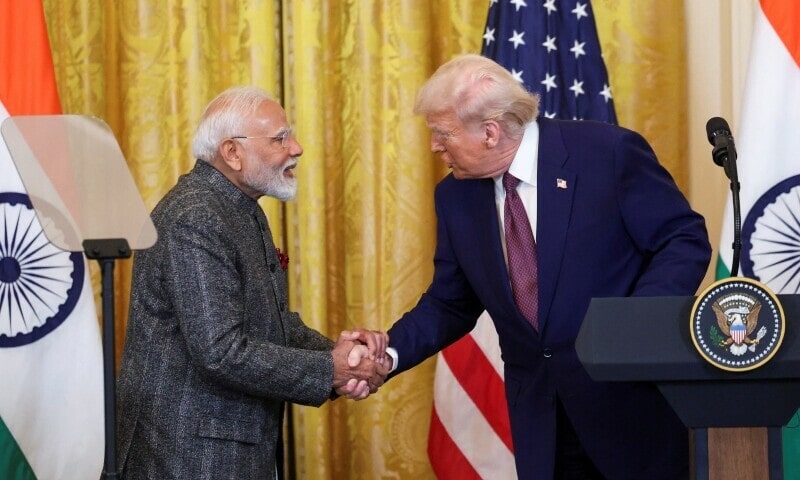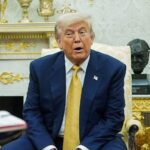Introduction
In a recent statement that caught the attention of global markets, former President Donald Trump declared that the United States and India are “almost done” finalizing a major trade agreement. If true, this deal could reshape economic relations between the two nations, addressing long-standing disputes over tariffs, market access, and intellectual property rights.
But how credible is Trump’s claim? What would a US-India trade deal look like, and what are the potential benefits—and pitfalls—for both countries? This article dives deep into the history of US-India trade relations, the key sticking points in negotiations, and what a breakthrough agreement could mean for businesses, consumers, and geopolitical dynamics.
The Backstory: US-India Trade Tensions Under Trump and Biden
Trump’s “America First” Approach
During his presidency (2017-2021), Donald Trump took a hardline stance on trade, imposing tariffs on steel and aluminum imports—including those from India. In retaliation, India raised duties on US products like almonds, apples, and motorcycles.
A major point of contention was India’s status in the Generalized System of Preferences (GSP), a program allowing developing nations to export certain goods to the US duty-free. In 2019, Trump removed India from the GSP, affecting $6 billion in Indian exports. Negotiations for a limited trade deal stalled, leaving unresolved issues on agriculture, digital taxes, and pharmaceutical regulations.
Biden’s More Diplomatic but Slow-Moving Strategy
Under President Joe Biden, tensions eased, but progress on a comprehensive trade deal remained sluggish. Instead, the two nations focused on defense partnerships and the Indo-Pacific Economic Framework (IPEF)—a broader initiative that includes trade but lacks binding commitments.
Now, with Trump suggesting that a deal is near, questions arise:
- Is this a political maneuver ahead of the 2024 election?
- What concessions would India and the US have to make?
- How would this impact global supply chains and China’s economic influence?
What Would a US-India Trade Deal Include?
While details remain scarce, past negotiations suggest the following key areas would be addressed:
1. Tariff Reductions and Market Access
- US Demands: Lower Indian tariffs on American agricultural goods (e.g., dairy, poultry, almonds) and tech products.
- India’s Demands: Restoring GSP benefits and easing US restrictions on Indian pharmaceutical exports.
2. Intellectual Property (IP) and Digital Trade
- The US wants stronger IP protections for American drugmakers, while India seeks flexibility to produce generic medicines.
- A potential compromise on data localization rules, which affect companies like Google and Amazon operating in India.
3. E-Commerce and Technology
- India’s digital tax on foreign tech firms has been a sticking point. The US may push for exemptions for American companies.
- Collaboration on semiconductor manufacturing to reduce reliance on China.
4. Geopolitical Implications: Countering China
A US-India trade deal would strengthen economic ties between the world’s two largest democracies, countering China’s dominance in Asia. This aligns with Trump’s anti-China trade policies and India’s efforts to attract Western businesses leaving China (“China+1” strategy).
Why Trump’s Claim Might Be Premature (Or Strategic)
Is a Deal Really “Almost Done”?
- No official confirmation from the Indian government or Biden administration.
- Past negotiations have collapsed at the last minute over small disagreements.
- Trump may be signaling to voters that he can secure better trade terms than Biden.
Potential Roadblocks
- Farmers’ Protests in India: Any move to allow more US agricultural imports could spark backlash.
- US Labor and Environmental Standards: Democrats may oppose a deal that doesn’t include strong worker protections.
- Election-Year Politics: If Trump wins in 2024, talks could restart—but if Biden remains, the deal may stall.
Economic Impact: Who Wins and Who Loses?
Winners
- US Farmers & Tech Firms: Greater access to India’s 1.4 billion consumers.
- Indian Pharma & IT Sector: Easier exports to the US market.
- Multinational Companies: More stable trade rules for businesses operating in both countries.
Losers
- Chinese Exporters: A stronger US-India trade relationship weakens China’s grip on global supply chains.
- Indian Small Businesses: Could face competition from cheaper US goods.
- US Manufacturing Workers: Some industries may oppose outsourcing to India.
What Happens Next?
Short-Term Outlook
- If Trump returns to office in 2025, expect rapid movement on trade talks.
- If Biden stays, progress will likely be slower but more predictable.
Long-Term Consequences
- A successful deal could boost bilateral trade (currently ~$190 billion) and reduce dependency on China.
- Failure could lead to more tariffs and trade wars, hurting both economies.
Conclusion: A High-Stakes Game of Economic Diplomacy
Donald Trump’s claim that the US and India are “almost done” with a trade deal should be taken with cautious optimism. While the groundwork exists for an agreement, political and economic hurdles remain.
If finalized, this deal could be a game-changer for global trade, strengthening US-India ties while challenging China’s economic dominance. But if negotiations fall apart again, both nations risk missing a crucial opportunity to redefine their economic futures.


